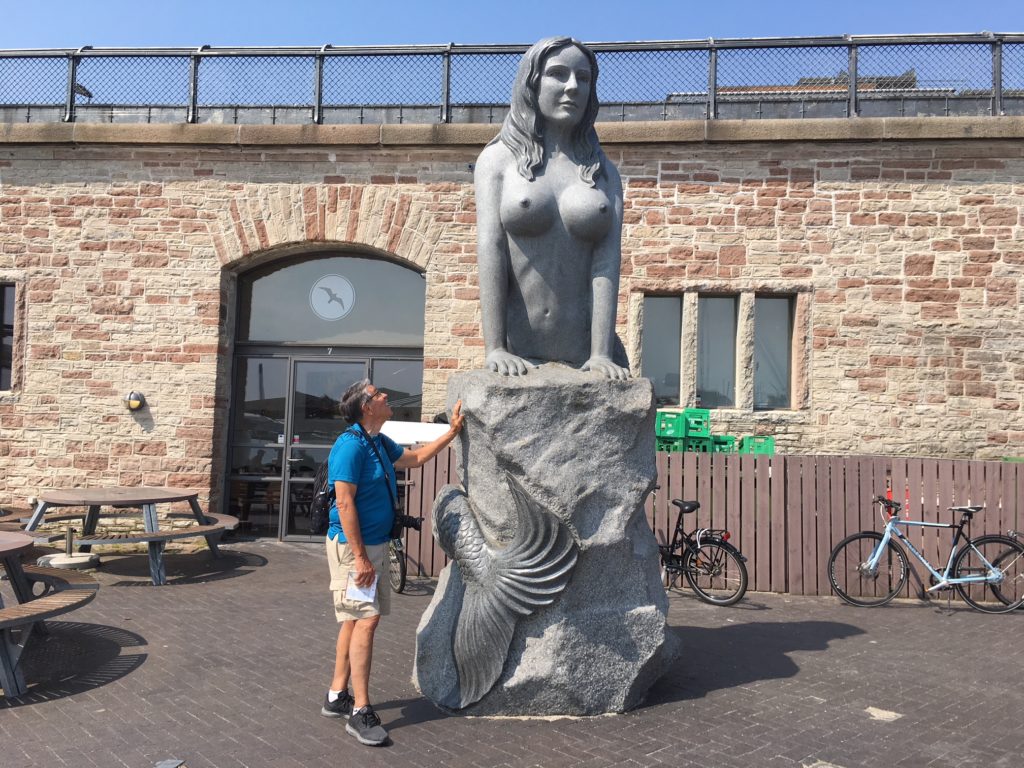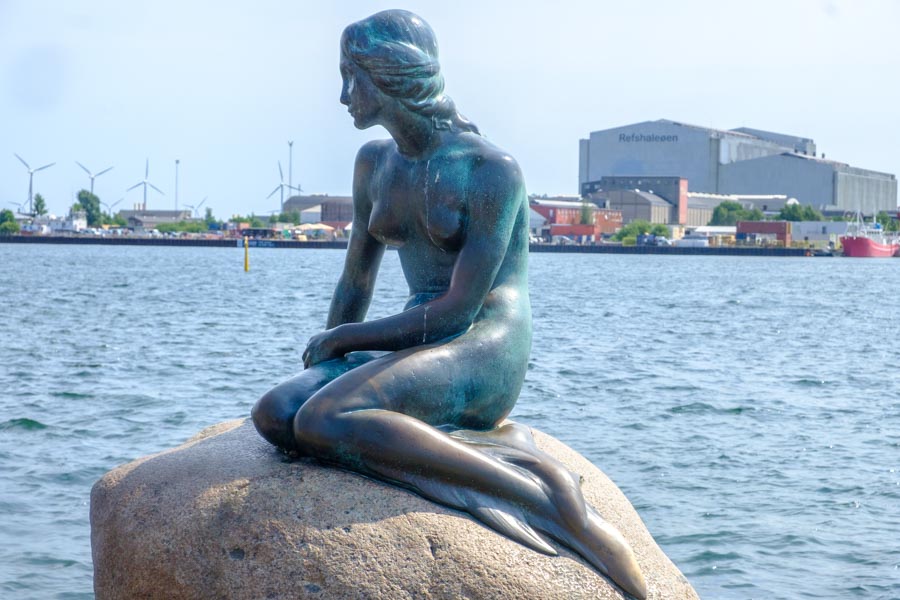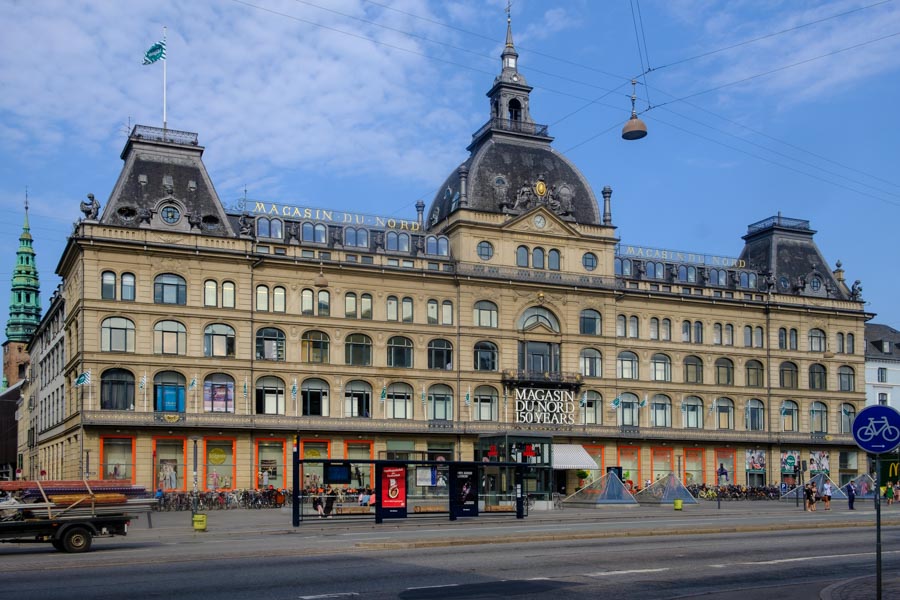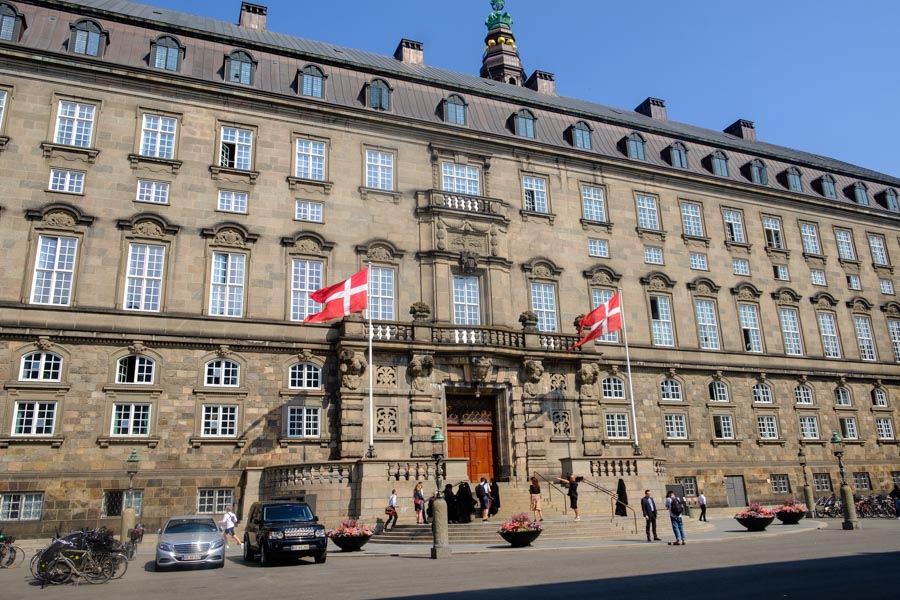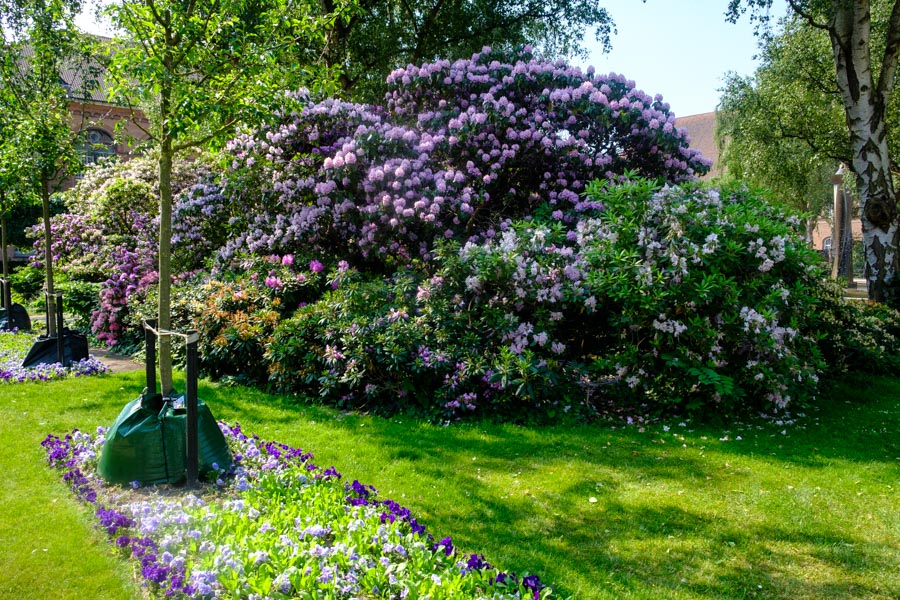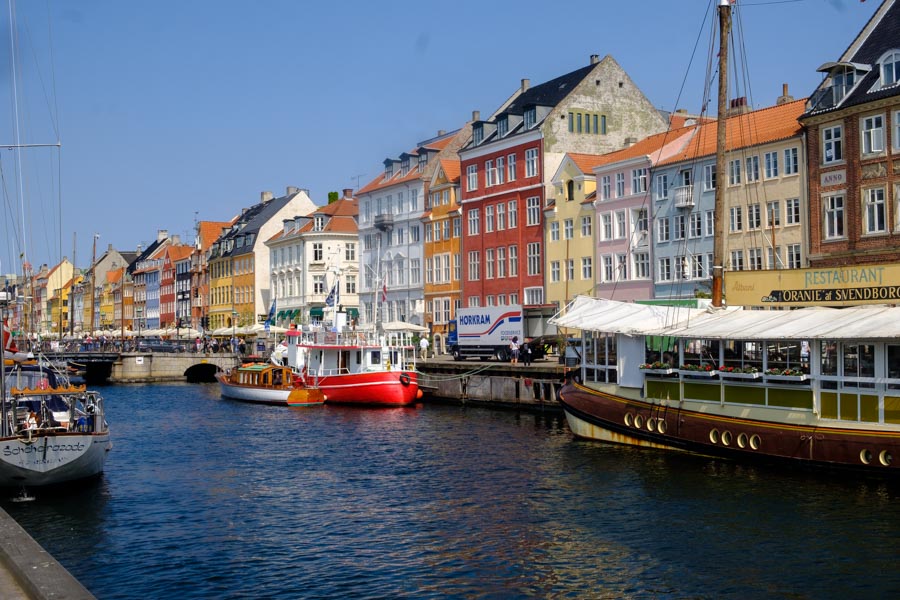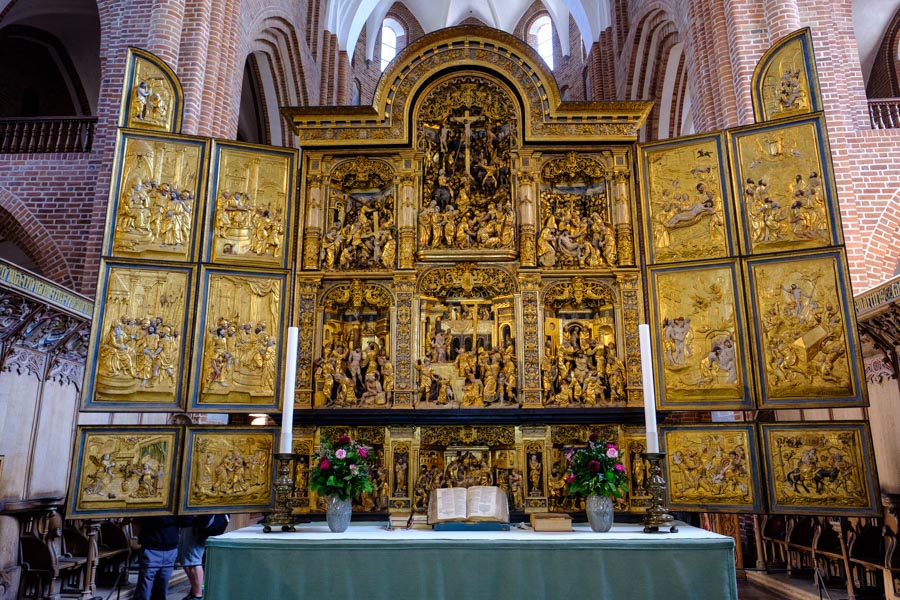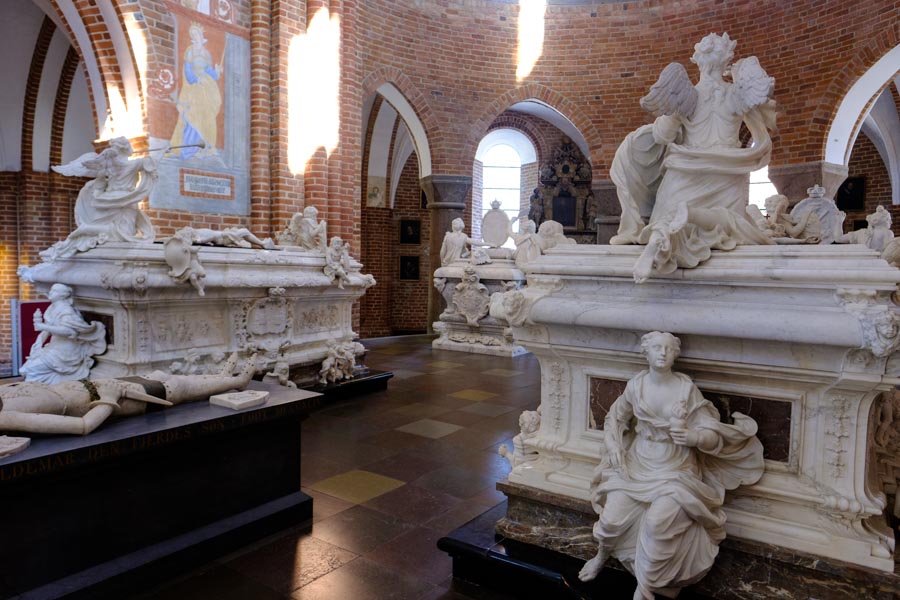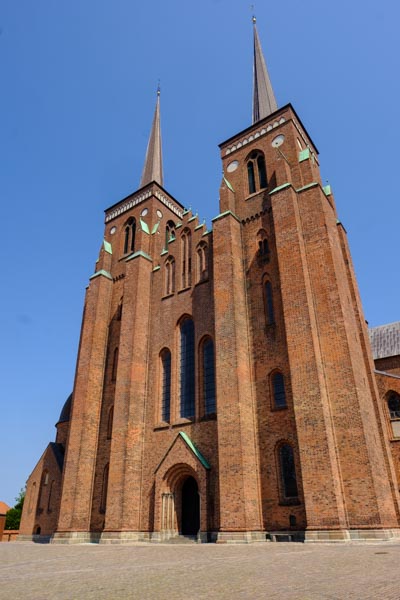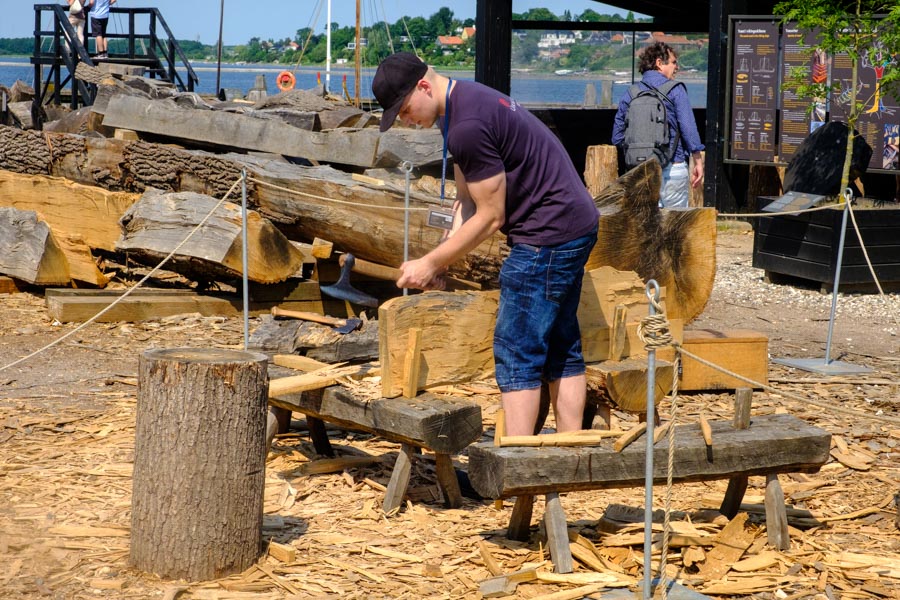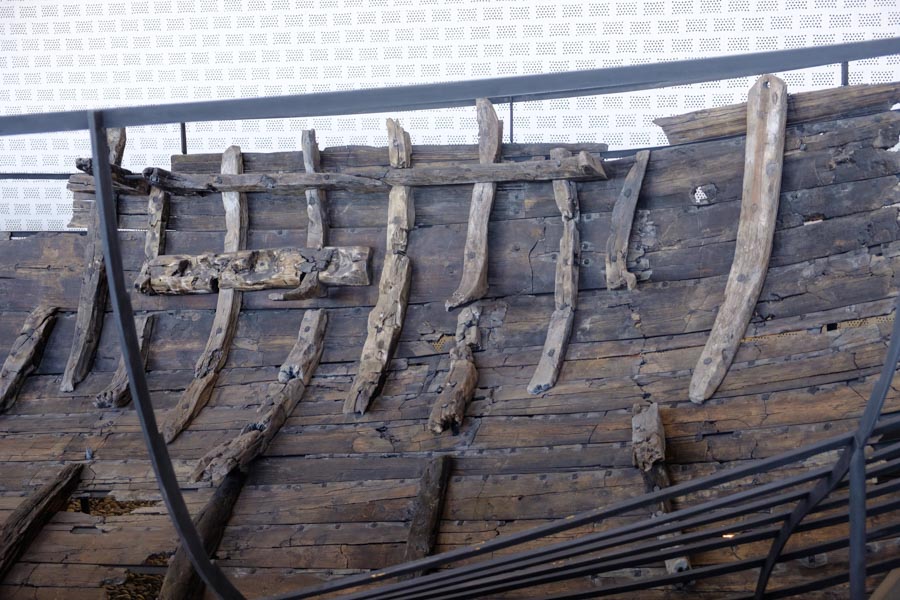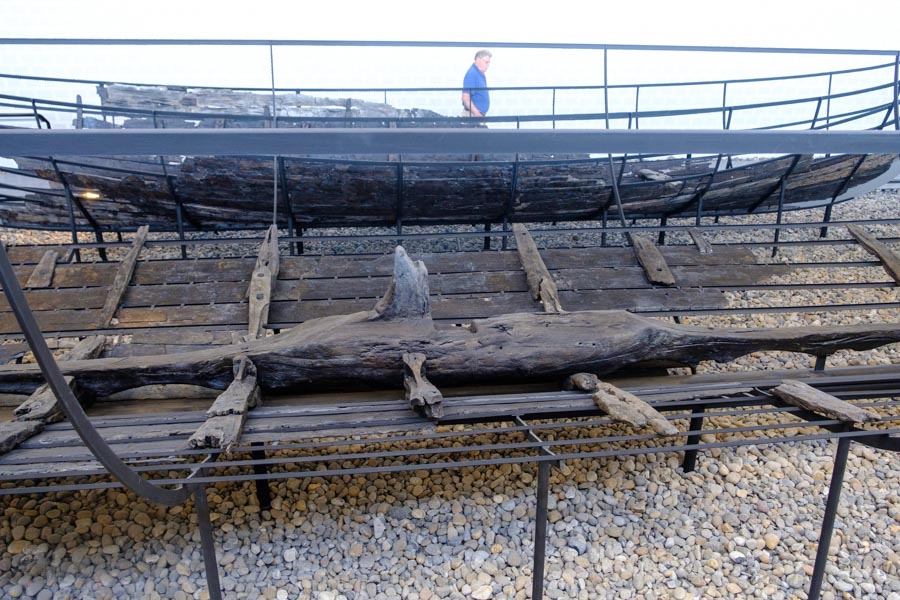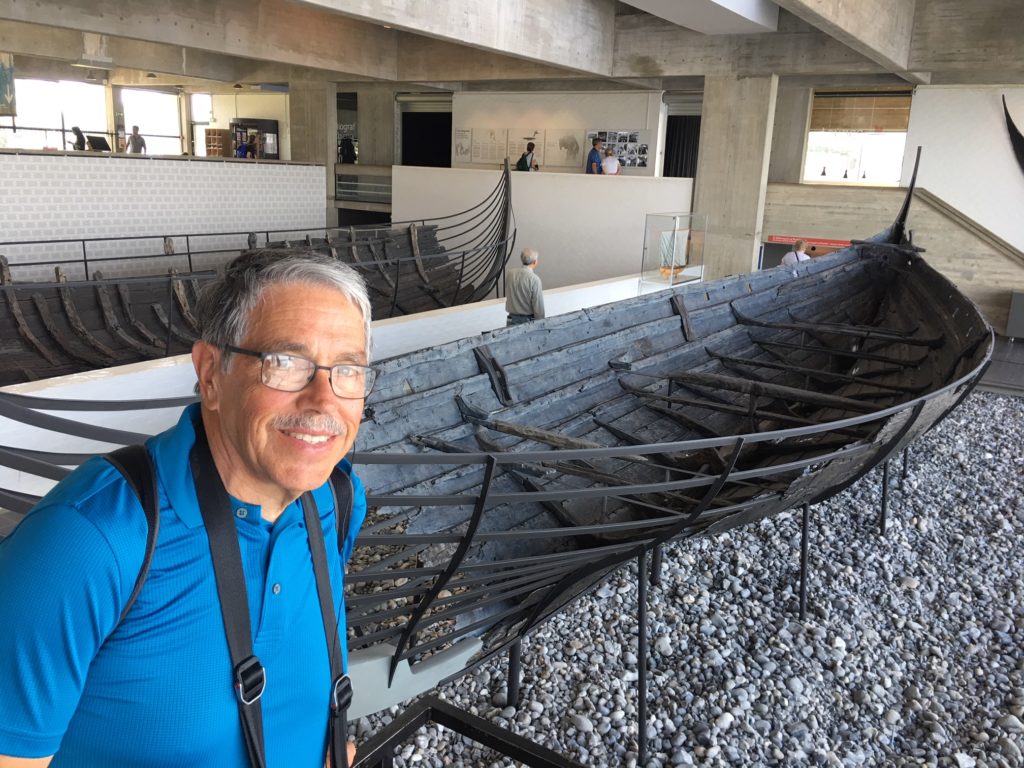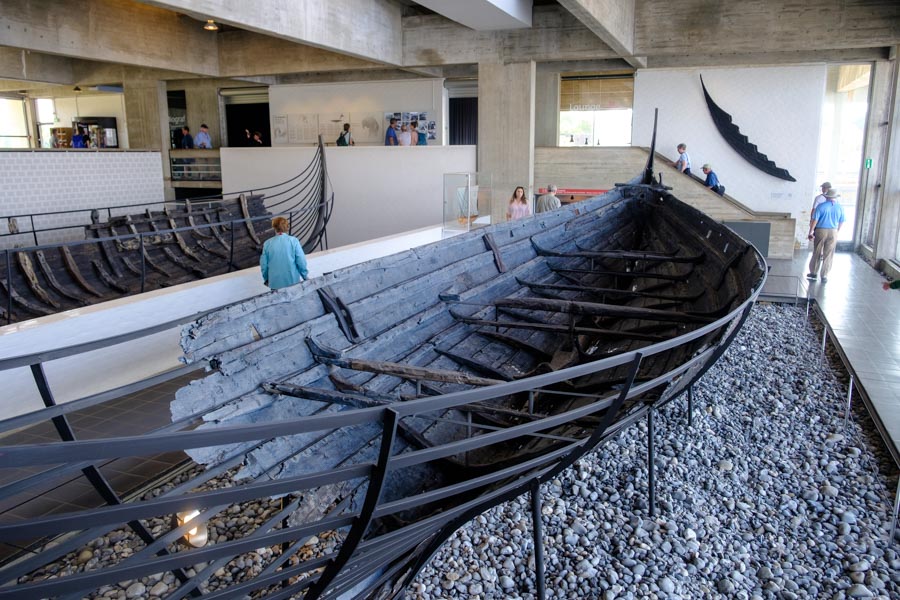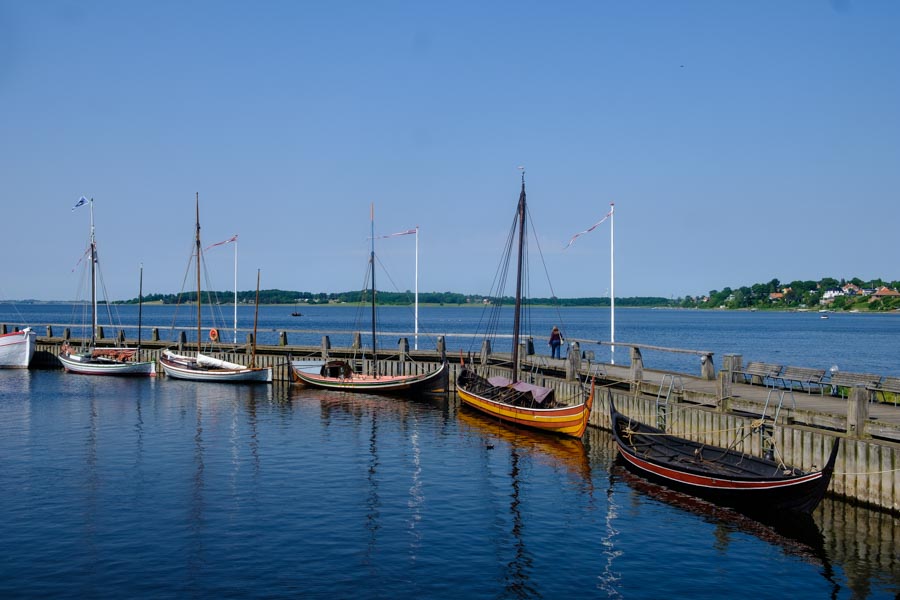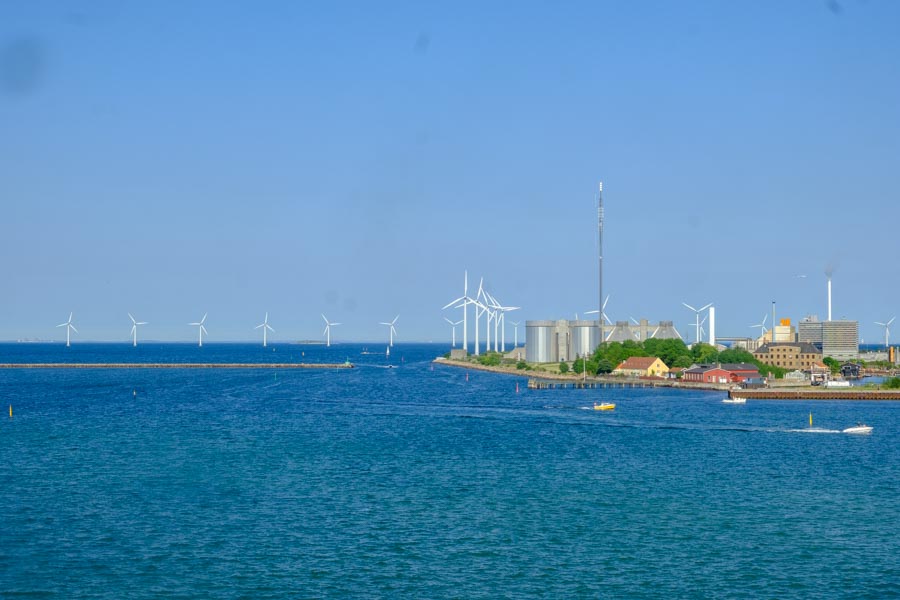I’ve always been a patron of the arts, including sculpture, and there is no more iconic image of a city than Copenhagen’s “The Little Mermaid” statue, inspired by Hans Christian Andersen’s fairy tail. Imagine my delight in discovering the mermaid right in front of our ship today.
Imagine my surprise later on to discover a more, shall we say, diminutive and more reserved version a few hundred meters further down the quay. Based on the number of tourists crowded around, I surmise that this smaller one must be the original, probably more along the lines of what HCA was thinking at the time. I later learned that the more robust one is named Dolly.Since our trip to the Viking Ship Museum didn’t leave until 12:45 we decided to take the shuttle bus to the downtown section of Copenhagen and do some exploring on our own. The bus dropped us off at a major intersection, a large vehicular circle with a statue of some guy on a horse. Unfortunately the whole circle has been dug up for betterment so we never identified the horseman.
We did manage, with the help of two maps, which we shared with Robin and Doris, two shipmates off on a similar adventure, to find a complex of three collocated parks, one including the Rosenborg Castle where they house the Danish Crown Jewels and other such stuff (we didn’t take the time to go in).
We then found our way down Bremerholm to the Round Tower. When astronomer Tycho Brahedied in 1601, King Charles IV built an observatory in his honor. We didn’t know about the staircase to the top (darn) but did poke our heads in to the church that is attached.
Next the Christiansborg Palace, the home of the Prime Minister, Parliament and the Supreme Court – it’s the only building to house all three branches of government in the world. Her Majesty Queen Margarethe II uses the Palace to perform her queenly duties. We didn’t go in but Robin and Doris did. We left them and headed back to the ship, passing the mermaids on the way. We arrived about an hour before our guided tour left, just enough time to hit the chow line up on Deck 7.
So we saw a lot of Copenhagen on foot – more than the guided tours cover. But we didn’t get any of the details – which king built what, what’s inside the buildings, etc. Most of the information I provided above I got from google. So why not do the free tour and get the straight skivvy from a guide? Maybe we should have but what we did get is a feel for Copenhagen. It’s a bustling major city with lots of construction, lots of traffic, lots of shopping, lots of tourists and zillions of bicycles, all of which are driven with little concern for doddering old folk tourists with cameras slung around their necks. This isn’t a medieval city that’s grown up into a big city (even though it is). It just feels like a big, vibrant city. And besides, it’s fun to navigate on your own and to blaze a trail through uncharted wilderness (the maps weren’t all that good).
After lunch it’s on the bus for a 45 minute drive to Roskilde Cathedral. The first church built on this site was by King Harold Bluetooth (yes, the communications standard invented by Danes, who named it after the king) around 985. The present brick church was built in the 1170s. No wood in this baby, and hence no fires to speak of in 900 years. Unlike the Norskies the Danes use stone and brick, not wood and hence have suffered far fewer fires. Do it right the first time, I always say.
The interesting thing about this Cathedral (one of 60-odd in Denmark, meaning there are 60 odd bishops) is that it is the final resting place for 39 kings and queens since the middle ages and each and every Danish king and queen since the reformation. King Bluetooth is thought to be buried on the grounds but no one knows where. Queen Margarethe’s spot is ready to go although it’s hidden from view until it’s needed.
I won’t bore you with the Danish royal lineage (I dozed off in the bus when the guide droned on and on explaining it), but here are a couple of tidbits interesting to me:
- There have been two royal lineages since the 1400s: The house of Oldenburgheld the Danish Crown between 1448 and 1863, when it passed to the house of Schleswig-Holstein-Sonderburg-Glücksburg. The two houses are related at the cousin level.
- The neat thing about Danish royalty in these two houses is that they’ve been named Christian and Frederick, alternating, time after time. The last ones were Christian X and Frederick IX. Frederick IX had three girls so Girl #1, Margarethe, picked up the reins in 1972.
- The only other Queen, Margarethe I, was the one who succeeded in uniting Denmark, Sweden and Denmark into a single kingdom.
- Many of the kings spent lots of time and fortune fighting the Swedes. They stayed out of European wars until Christian IV dragged Denmark into the 30 Years’ War.
Finally we visited the Viking Ship Museum in Roskilde. Back in 1962 five Viking ships from 1070 were discovered in the Roskilde fjord. The remnants were recovered and put back together and are on display at this museum. The five ships were deliberately sunk (filled with rocks) to block one of the three entrances to the Roskilde Fjord. The ships were of different sizes. Some were built to carry cargo; some were narrower and hence faster war ships.
Based on these ships a number of replicas have been constructed using not only the same design but also the same tools and fabrication methods used by the Vikings. They have been sailed to a number of European ports, including Dublin, Ireland in 2007. One replica has been under sail (and oar) for more than 30 years and has been retired. A replacement is under construction and visitors can watch the hewing of wood, forging of nails, weaving of sail fabric and rope making.
So that was a busy day. We’re going to have another one tomorrow: an all-day trip to Berlin. The train leaves at 6:30 AM so we need to get to bed early tonight. The weather forecast is for 89 degrees with showers possible in the afternoon.

